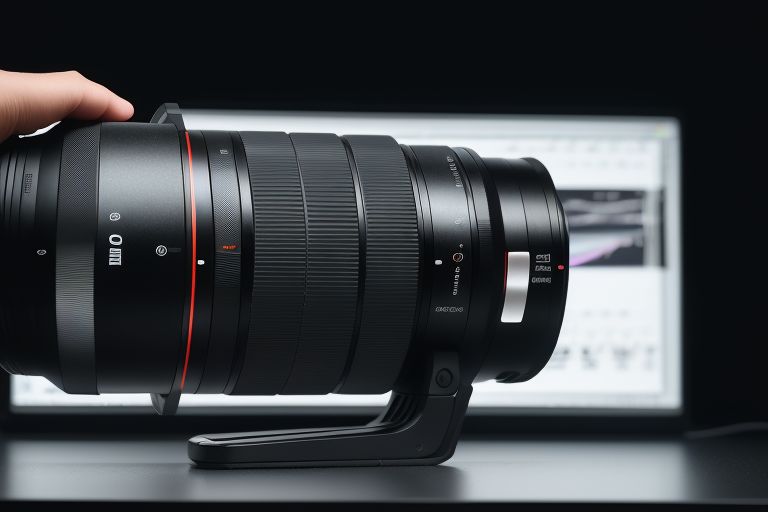Have you ever wondered how professional-looking videos are created effortlessly? The answer lies in the power of **AI for video editing**. This groundbreaking technology is revolutionizing the way content creators, marketers, and even hobbyists approach video production. With AI-driven tools, you can now edit videos faster, smarter, and with greater precision than ever before.
What is AI for Video Editing?
AI for video editing refers to the use of artificial intelligence algorithms to automate and enhance various aspects of video production. From cutting and trimming footage to adding effects and transitions, AI-powered tools are designed to simplify complex tasks, saving time and effort. These tools analyze video content, identify key elements, and apply edits based on predefined rules or user preferences. For instance, AI can detect faces, objects, or scenes and make adjustments accordingly.
How AI is Transforming Video Editing
Gone are the days when video editing required hours of manual work. With AI, the process has become more efficient and accessible. Here’s how AI is transforming the industry:
- Automated Editing: AI can automatically cut and arrange clips to create coherent and engaging videos.
- Enhancements: Tools like color correction, noise reduction, and stabilization are now handled seamlessly by AI algorithms.
- Personalization: AI can tailor videos to specific audiences by analyzing their preferences and behavior.
- Content Analysis: AI identifies key moments, captions, and even emotions in videos, making it easier to highlight important segments.
Top AI-Powered Video Editing Tools
Several AI video editing tools have emerged as game-changers in the industry. Here are some of the most popular ones:
- Adobe Premiere Pro with Sensei: Adobe’s AI-powered tool offers features like Auto Reframe and Scene Edit Detection, making editing more intuitive.
- Runway: This platform provides AI-driven tools for tasks like green screen effects, video inpainting, and style transfer.
- Descript: Known for its AI-powered transcription and editing capabilities, Descript simplifies the process of editing audio and video.
- Magisto: Ideal for beginners, Magisto uses AI to create professional-quality videos from raw footage in minutes.
Real-World Applications of AI in Video Editing
AI-powered video editing isn’t just a trend; it’s being widely adopted across various industries:
- Marketing: Brands use AI to create personalized ads and promotional videos tailored to their target audience.
- Education: Educators leverage AI tools to produce engaging video lessons and tutorials.
- Media and Entertainment: Streaming platforms use AI to auto-generate trailers and highlights.
- Social Media: Content creators rely on AI to edit and optimize videos for different platforms like Instagram, TikTok, and YouTube.
Benefits of Using AI for Video Editing
Why should you consider AI for your video editing needs? Here are the top benefits:
- Time Efficiency: AI automates repetitive tasks, allowing you to focus on creativity.
- Cost-Effectiveness: Reduce the need for expensive software or professional editors.
- Consistency: AI ensures a uniform look and feel across all your videos.
- Accessibility: Even beginners can create professional-quality videos with minimal effort.
Challenges and Limitations
While AI for video editing offers numerous advantages, it’s not without its challenges:
- Learning Curve: Some tools require a bit of practice to master.
- Creativity Constraints: AI may not fully replicate the creative intuition of a human editor.
- Cost: Advanced AI tools can be expensive for small businesses or individual creators.
- Data Dependency: AI algorithms rely on large datasets, which may raise privacy concerns.
How to Choose the Right AI Video Editing Tool
With so many options available, selecting the right AI video editing tool can be overwhelming. Here’s a step-by-step guide to help you decide:
- Identify Your Needs: Determine the features you require, such as automated editing, effects, or platform integration.
- Consider Your Budget: Compare pricing plans and choose one that fits your financial constraints.
- Read Reviews: Check user feedback to gauge the reliability and performance of the tool.
- Test the Tool: Many platforms offer free trials, so take advantage of them to assess usability.
Future Trends in AI Video Editing
The future of AI in video editing looks promising. Here are some trends to watch out for:
- Real-Time Editing: AI tools will enable instant editing during live broadcasts or recordings.
- Enhanced Personalization: Videos will be tailored to individual viewers based on real-time data.
- Integration with AR/VR: AI will play a key role in editing augmented and virtual reality content.
- Improved Accessibility: Tools will become more user-friendly, catering to non-technical users.
Conclusion
AI for video editing is no longer a futuristic concept; it’s a reality that’s reshaping the way we create and consume video content. From automating mundane tasks to enhancing creativity, AI-powered tools are empowering creators of all skill levels. As technology continues to evolve, the possibilities for AI in video editing are endless. Whether you’re a seasoned professional or a beginner, now is the perfect time to explore these tools and elevate your video production game. Embrace the future of video editing and unlock your creative potential with AI.












Leave a Reply